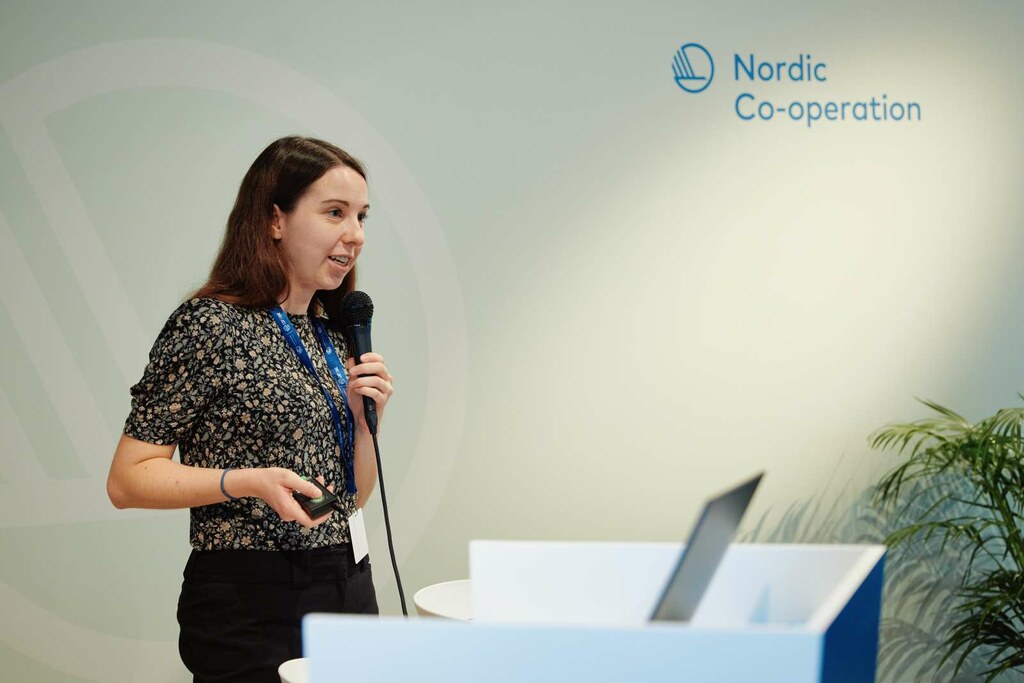
Transformation of unprecedented scale and speed needed
On Saturday 2 December, Nordic Energy Research opened this year's energy programme at COP with the session "Tracking Global and Nordic Clean Energy Progress". The sessions focused on Global and…
On Saturday 2 December, Nordic Energy Research opened this year’s energy programme at COP with the session “Tracking Global and Nordic Clean Energy Progress”. The sessions focused on Global and Nordic progress towards a carbon-neutral society and challenges such as pace of buildout, regulation, nature perservation, and financing. The session was moderated by Nordic Energy Research’s COO, Kevin Johnsen.
The demand is for fossile free products is there
Viktoria Karsberg, Head of Corporate Identity and Group Communications, SSAB, started the session by explaining how the Swedish steel company is working to reduce its emissions. In both Finland and Sweden, the production is based on blast furnaces that emit a lot of CO2.
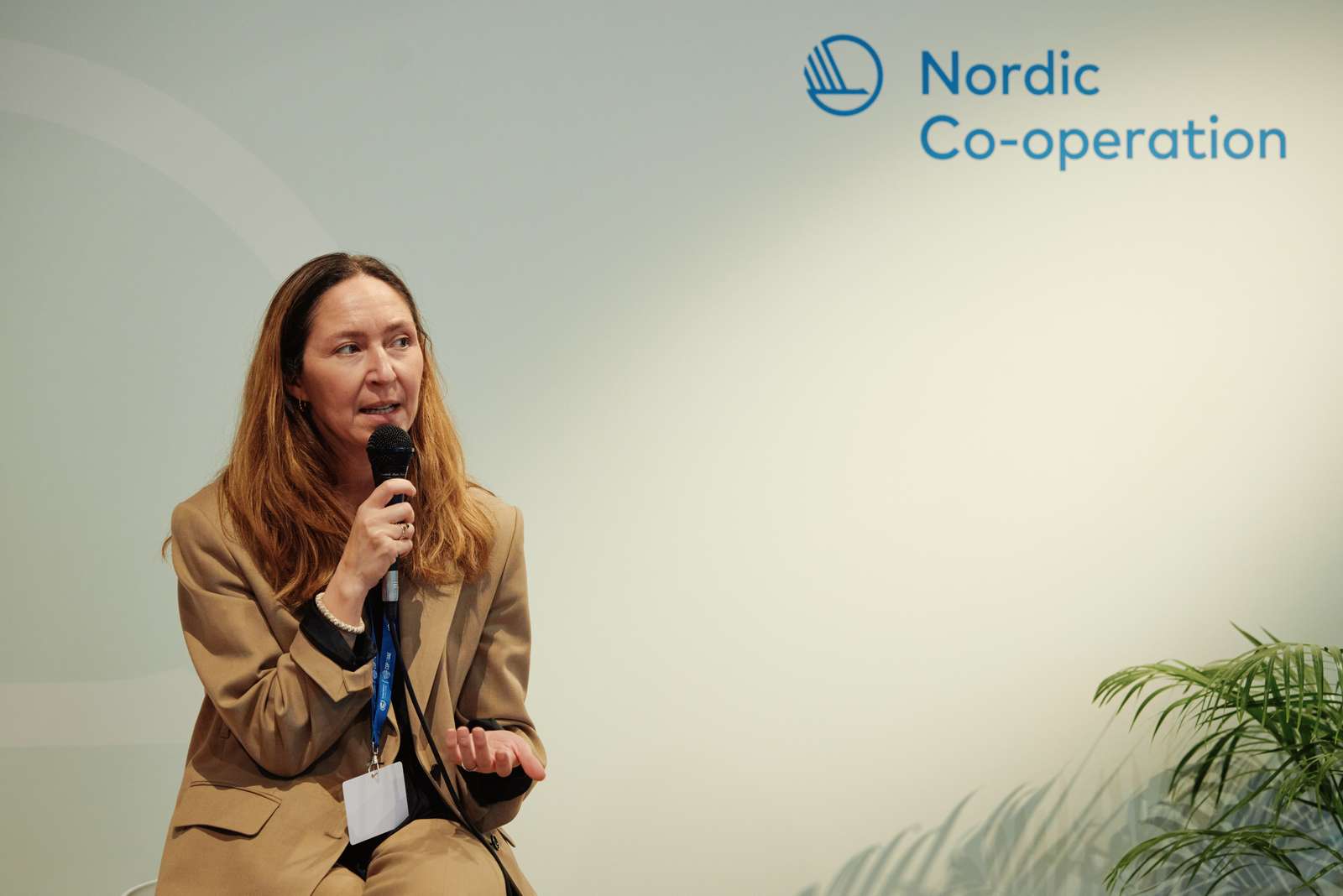
Viktoria Karsberg, Head of Corporate Identity and Group Communications, SSAB.
“For a long time, we thought that we were the solution for our customers, providing them with lighter, stronger steel. But in 2016, we realized that with the Paris agreement in place, this would not be enough. So we started on a journey together with two partners, LKAB and Vattenfall, to find a path to fossile-free steel making.”
In 2021, the company was able to show that fossil-free sponge iron was possible, paving the way for fossile-free steel, producing a total of 500 tons in the pilot during 2022.
“The demand for this kind of product is really there, so for us, it’s about how quickly we can come to the market.”
The Nordic Region is well positioned for developing renewable energy
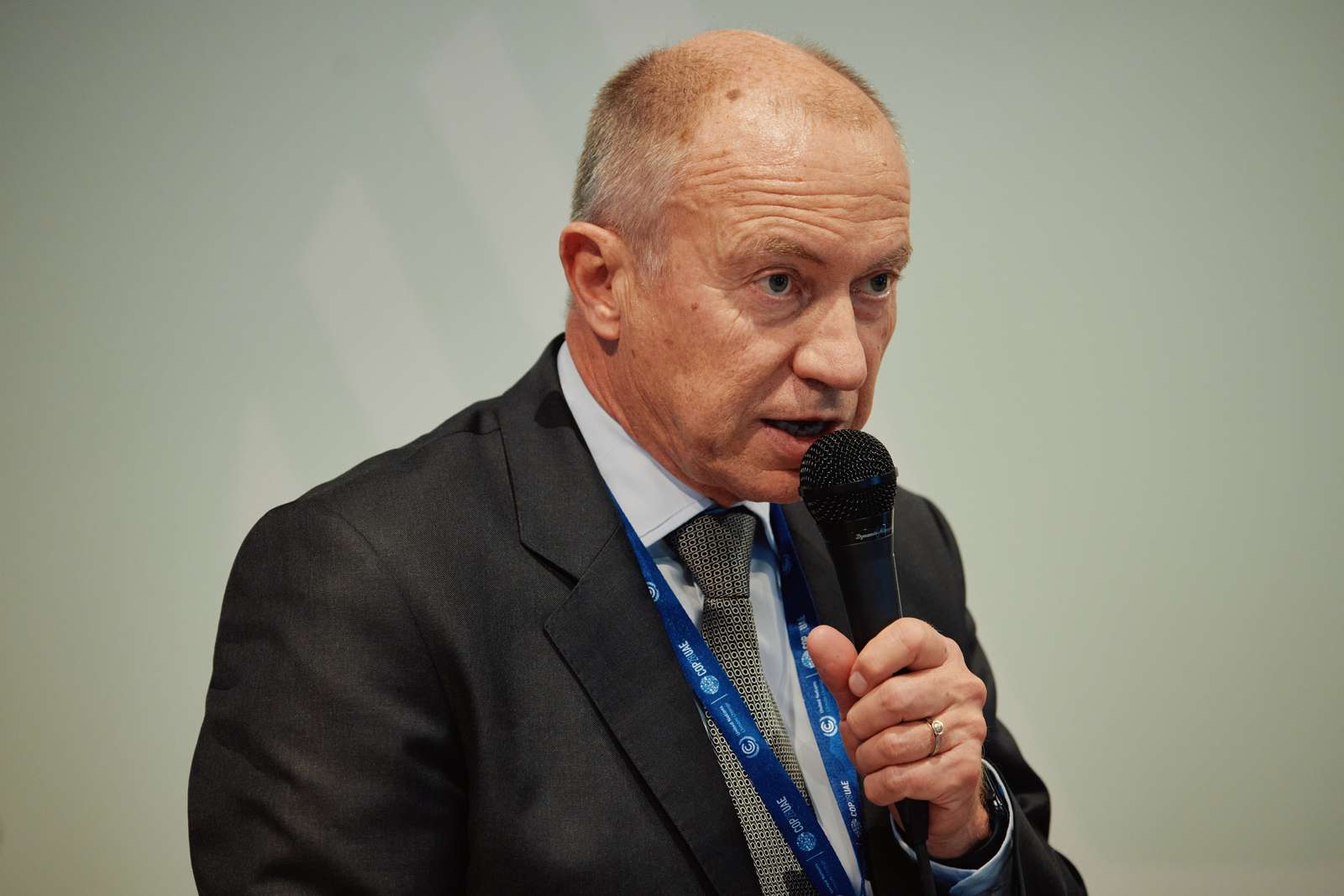
Christian Rynning-Tønnesen, CEO, Statkraft.
To electrify heavy industry and cut carbon emissions, a large buildout of renewable energy is needed. Christian Rynning-Tønnesen, CEO of the world’s largest renewable energy producer, Norwegian Statkraft, continued by describing their plans to construct between 30 to 40 power plants per year from 2025 onwards. This will offset 20 million tonnes of fossile fuel emissions per year by 2030, equivalent to 40 percent of Norway’s emissions.
Rynning-Tønnesen highlighted the Nordic Regions unique position in the green transition. “We already have a close to emission free renewable electricity system in Norway and Sweden and also quite low emissions in Finland and Denmark. Combined, we have some of the best wind resources in Europe. Norway, Sweden, and to some extent Finland also have the hydropower that can balance out the intermittency of the wind.”
The transition needs to be faster, greener, fairer
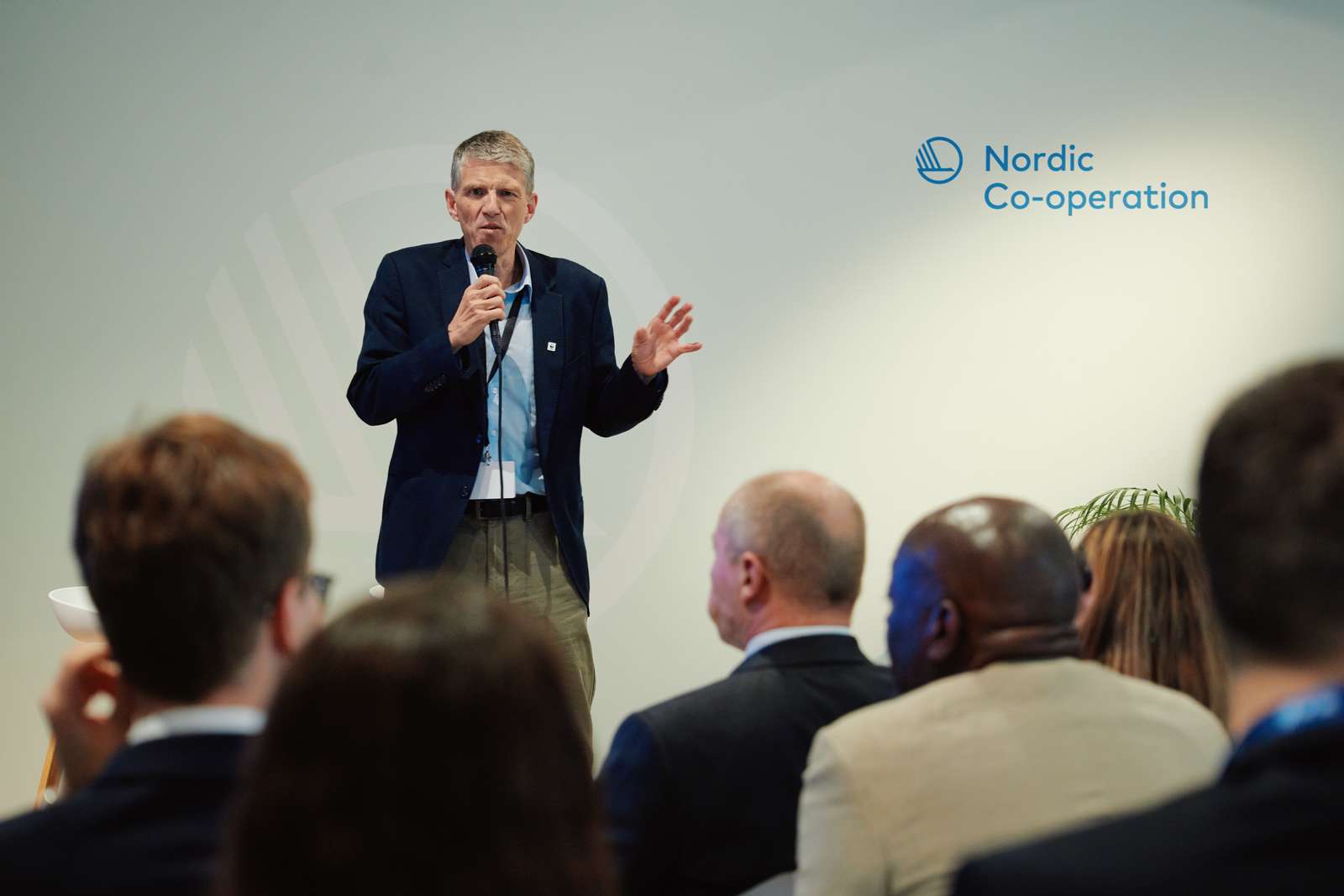
Dean Cooper, Global Energy Lead, WWF.
Taking on a broader picture of the clean energy buildout, Dean Cooper, Global Energy Lead, WWF, focused on how the energy transition needs to be faster, greener, and fairer. An increased pace is needed but it also needs to be fair, both for people who’s livelihood now depends on fossil fuels and for developing countries that need to invest to make the transition possible.
“Renewable energy is not easy. First, you have to electrify in order to be able to use renewables, and there are always some industries that are very difficult to use renewables in. These high-energy-intensive industries like ceramics, steel, chemicals, and some of the transports like aviation and shipping are difficult to adress”
Cooper concluded his note by emphasizing the need to work together to make a real change and meet the climate goals.
Transformation of unprecedented scale and speed is needed
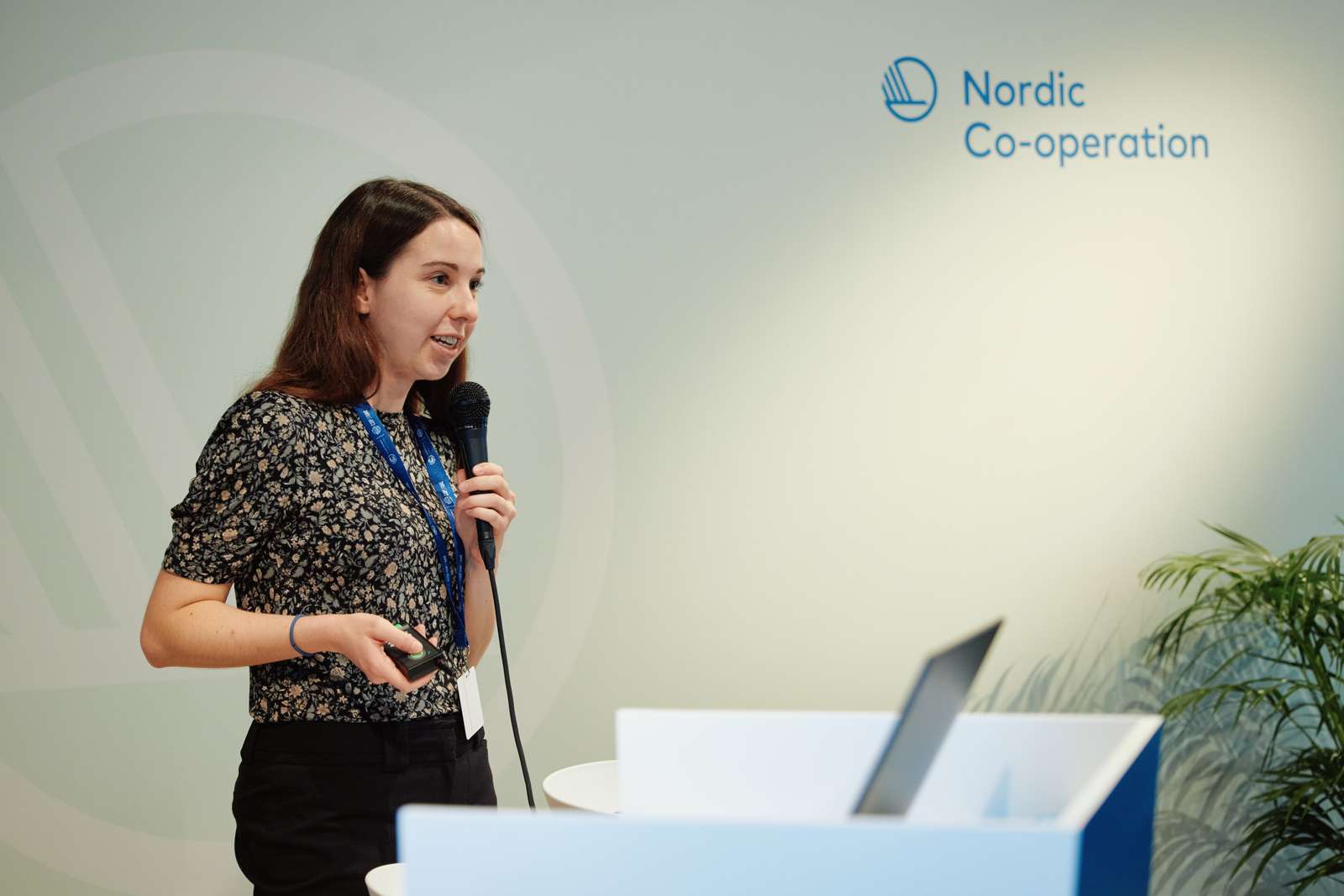
Tiffany Vass, Energy Analyst of Clean Energy Technologies, IEA.
Tiffany Vass, Energy Analyst of Clean Energy Technologies, IEA, gave highlights from the IEA report Tracking Clean Energy Progress 2023. The report assesses recent developments for over 50 components of the energy system that are critical for clean energy transitions, including sectors, subsectors, technologies, infrastructure, and cross-cutting strategies.
“We have three technologies that are on track. So that’s solar PV, electric vehicles, and lightning. And while that might seem like not a lot there are a couple of important things to note. First, that solar pv and electric vehicles will account for about on third of emission reductions in the energy sector by 2030, so they are pulling a really heavy weight in our net zero scenarios.” continuing Vass added “This is the first year that we evaluated solar as on track, so things are picking up and moving in the right direction”.
Addressing the work required to reach the 2050 goals, Vass said, “Achieving net zero by 2050 requires such a massive transformation of unprecedented scale and speed. We need to be doing a lot more in these sectors. The overall picture is one of positive developments in many sectors, but really, an acceleration is needed in quite a few sectors.”
Nordic Energy Research’s work on clean energy
